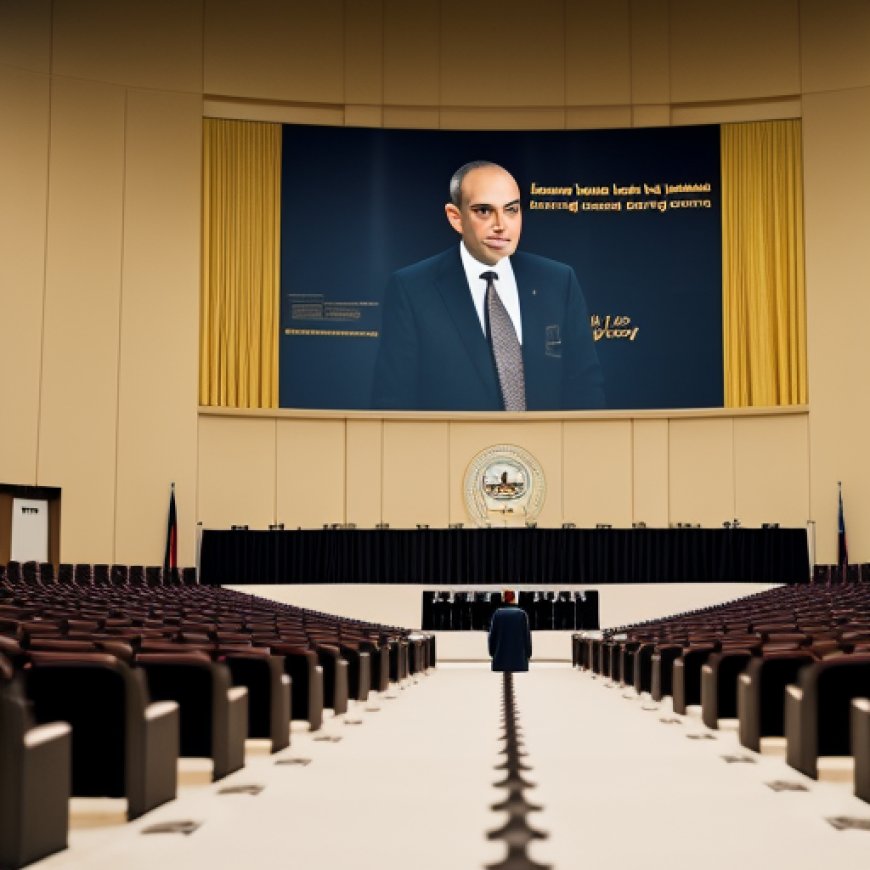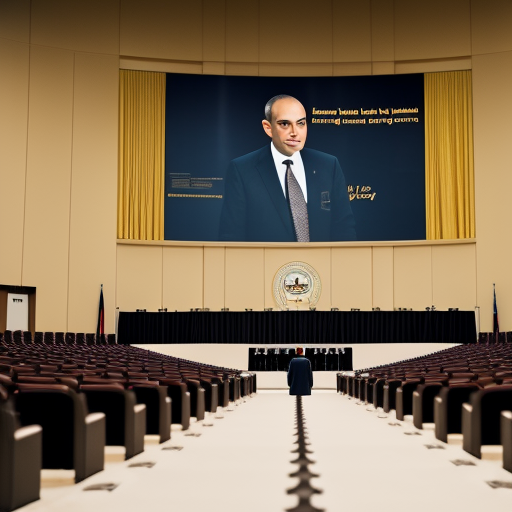Al Hassan Symposium – Understanding Rebel (Dis)Order in Al Hassan – Lieber Institute West Point
Al Hassan Symposium – Understanding Rebel (Dis)Order in Al ... Lieber Institute West Point


Al Hassan Symposium – Understanding Rebel (Dis)Order in Al Hassan
Introduction
Every society throughout history has had some order in place, meaning an established framework that dictates which behaviors are deemed acceptable and encouraged, and which are frowned upon and may lead to punishment. Traditionally, this social order has been perceived, particularly from a Western standpoint, as a construct crafted by a sovereign authority, expressed through commands or norms backed by the threat of sanctions for non-compliance. Since the 17th Century and the constitution of the Westphalian architecture, lawyers have primarily directed their attention toward States, which have been granted the ultimate authority as sovereigns within their respective territories. Over time, we have developed the belief that States’ presence ensures a certain level of order, while their absence results in chaos and disorder.
The Al Hassan Case and Non-State Armed Groups (NSAGs)
The Al Hassan case represents an opportunity to challenge this understanding of social dynamics from an international legal perspective. In a world in which non-State armed groups (NSAGs) sometimes offer a degree of stability in the territories they control, subjecting inhabitants to their own laws and regulations and acting as de facto authorities, the International Criminal Court (ICC) Trial Chamber will deal for the first time since its establishment with NSAGs’ governance and normative activities through the prism of international law. In that context, this report aims to discuss (domestic) law-making activities by NSAGs and their implications for detention operations by these non-State entities.
Non-State Armed Groups’ Laws in Context
- Certainly, in the State-centric system we live in, reflecting on the possibility of NSAGs adopting laws and regulating behaviors sounds farfetched. For NSAGs, as well as for the estimated 64 million individuals living under their exclusive control, this is an everyday reality.
- A study published in 2016 revealed that between 1950 and 2006, 37% of groups have passed laws and established “order institutions.”
- NSAGs have relied on these laws to detain individuals, set up judicial or quasi-judicial bodies, conduct trials, provide education and health care services, collect taxes, and even issue birth and death certificates within territories under their control.
- The notion that what occurs in NSAG-controlled territories is exclusively ruled by chaos and disorder hardly reflects today’s empirical reality.
Non-State Armed Groups’ Laws under Scrutiny
Some of these dynamics have been the focus of attention in the Al Hassan case. The fact that NSAGs adopt “laws” to rule the life of individuals placed under their control was explicitly addressed on various occasions during the closing statements and by the Pre-Trial Chamber I (PTC) in the Confirmation of Charges Decisions. The PTC’s attention on this issue came about because it had to deal with two specific situations: (i) the reference to “lawful sanctions” in the crime against humanity of torture; and (ii) the war crime of passing sentences without a prior judgment rendered by a “regularly constituted court,” accompanied by the judicial guarantees generally recognized as essential.
Non-State Armed Groups’ Laws as a Basis for Criminal Law Detentions
- Despite the fact that the PTC decided that an examination of Ansar Dine/AQIM’s legal frameworks was not necessary, it described how some of the penalties imposed as a result of the judicial processes led to individuals’ deprivation of liberty for the alleged commission of “common” crimes.
- Detention for the commission of criminal acts is nonetheless envisaged. The ICRC has stated that criminal law detentions are indeed regulated by the IHL of NIACs, and that the reference in Common Article 3 to the “passing of sentences and the carrying out of executions” alludes to criminal law procedures.
- Considering that NSAGs do adopt laws regulating the behaviors of individuals living under their control, it can be argued that there is an increasing acknowledgment that NSAGs may have some sort of legislative authority to adopt criminal laws (or adapt those already applicable) and conduct trials dealing with criminal matters.
Concluding Thoughts
I do not know if the Trial Chamber will consider the legal framework governing criminal law detentions resulting from decisions delivered by the Islamic Tribunal of Timbuktu, in particular because “unlawful confinement” is a war crime only in international armed conflicts, as per Article 8(2)(vii) of the Rome Statute. Yet, given the number of NSAGs depriving individuals of their liberty around the world, including for criminal reasons, and how protecting those detainees is a matter of humanitarian concern, I expect more (and more thorough) discussions to happen on this subject-matter soon.
SDGs, Targets, and Indicators
-
SDGs Addressed or Connected to the Issues Highlighted in the Article
- SDG 16: Peace, Justice, and Strong Institutions
- SDG 5: Gender Equality
- SDG 4: Quality Education
- SDG 3: Good Health and Well-being
- SDG 10: Reduced Inequalities
-
Specific Targets Based on the Article’s Content
- Target 16.3: Promote the rule of law at the national and international levels and ensure equal access to justice for all.
- Target 5.5: Ensure women’s full and effective participation and equal opportunities for leadership at all levels of decision-making in political, economic, and public life.
- Target 4.7: Ensure that all learners acquire the knowledge and skills needed to promote sustainable development, including through education for sustainable development and sustainable lifestyles.
- Target 3.8: Achieve universal health coverage, including financial risk protection, access to quality essential health-care services, and access to safe, effective, quality, and affordable essential medicines and vaccines for all.
- Target 10.2: By 2030, empower and promote the social, economic, and political inclusion of all, irrespective of age, sex, disability, race, ethnicity, origin, religion or economic or other status.
-
Indicators Mentioned or Implied in the Article
- Indicator 16.3.1: Proportion of population who have experienced a dispute in the past two years and who accessed a formal or informal dispute resolution mechanism, by type of mechanism.
- Indicator 5.5.1: Proportion of seats held by women in (a) national parliaments and (b) local governments.
- Indicator 4.7.1: Extent to which (i) global citizenship education and (ii) education for sustainable development are mainstreamed in (a) national education policies; (b) curricula; (c) teacher education; and (d) student assessment.
- Indicator 3.8.1: Coverage of essential health services (defined as the average coverage of essential services based on tracer interventions that include reproductive, maternal, newborn and child health, infectious diseases, non-communicable diseases, and service capacity and access).
- Indicator 10.2.1: Proportion of people living below 50 percent of median income, by age, sex, and persons with disabilities.
Table: SDGs, Targets, and Indicators
| SDGs | Targets | Indicators |
|---|---|---|
| SDG 16: Peace, Justice, and Strong Institutions | Target 16.3: Promote the rule of law at the national and international levels and ensure equal access to justice for all. | Indicator 16.3.1: Proportion of population who have experienced a dispute in the past two years and who accessed a formal or informal dispute resolution mechanism, by type of mechanism. |
| SDG 5: Gender Equality | Target 5.5: Ensure women’s full and effective participation and equal opportunities for leadership at all levels of decision-making in political, economic, and public life. | Indicator 5.5.1: Proportion of seats held by women in (a) national parliaments and (b) local governments. |
| SDG 4: Quality Education | Target 4.7: Ensure that all learners acquire the knowledge and skills needed to promote sustainable development, including through education for sustainable development and sustainable lifestyles. | Indicator 4.7.1: Extent to which (i) global citizenship education and (ii) education for sustainable development are mainstreamed in (a) national education policies; (b) curricula; (c) teacher education; and (d) student assessment. |
| SDG 3: Good Health and Well-being | Target 3.8: Achieve universal health coverage, including financial risk protection, access to quality essential health-care services, and access to safe, effective, quality, and affordable essential medicines and vaccines for all. | Indicator 3.8.1: Coverage of essential health services (defined as the average coverage of essential services based on tracer interventions that include reproductive, maternal, newborn and child health, infectious diseases, non-communicable diseases, and service capacity and access). |
| SDG 10: Reduced Inequalities | Target 10.2: By 2030, empower and promote the social, economic, and political inclusion of all, irrespective of age, sex, disability, race, ethnicity, origin, religion or economic or other status. | Indicator 10.2.1: Proportion of people living below 50 percent of median income, by age, sex, and persons with disabilities. |
Behold! This splendid article springs forth from the wellspring of knowledge, shaped by a wondrous proprietary AI technology that delved into a vast ocean of data, illuminating the path towards the Sustainable Development Goals. Remember that all rights are reserved by SDG Investors LLC, empowering us to champion progress together.
Source: lieber.westpoint.edu

Join us, as fellow seekers of change, on a transformative journey at https://sdgtalks.ai/welcome, where you can become a member and actively contribute to shaping a brighter future.







